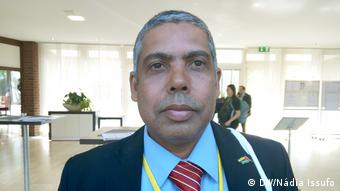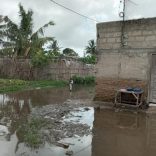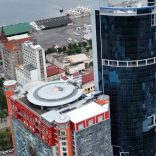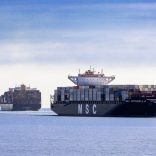Outrage as thefts of hoes and capulanas rise at funerals in Nampula's Mukhura cemetery
Mocímboa da Praia: Is attack problem under control?

The recent escape of captive women and work done by researchers from MASC and IESE show that the problem in Mocímboa da Praia is much more complex than was imagined, with social, economic and political exclusion at its origin.
The situation is not yet under control in Mocímboa da Praia, in northern Mozambique, although Mozambique’s Defence and Security Forces (FDS) are working to end armed attacks by unknown people. The recent escape of women from captivity and the findings of a study by MASC (Civil Society Support Mechanism) and IESE (Institute of Social and Economic Studies) researchers on the ground show that the problem is much more complex than it may seem: social, economic and political exclusion may have been decisive.
At the end of April, the mayor of Mocímboa da Praia was in Bonn, Germany, to participate in a of local government sustainability forum. DW Africa took the opportunity to ask if everything was under control in their region, following the attacks by unknown parties in October 2017. Fernando Neves did not hesitate to say that the situation was “normal”.
“At this moment, Mocímboa da Praia has returned to normal. We are working, people are doing their jobs. And once again, all thanks to the Defence and Security Forces.”

“The work continues”
However, reports reaching us seem to indicate that the situation is not so under control, and the FDS has not yet succeeded in destroying the root of the problem. Proof of this is the recent escape of three women and three children from a hideout of the armed groups that have attacked villages in the northern part of Cabo Delgado province. They were taken in by the police in Nangade, spokesperson for Mozambique Police general command Cláudio Langa said.
“Those women who surrendered fled after an attack by the Defence and Security Forces against the base. The base was attacked and those women managed to flee during the attack.”
Now there is no doubt that the attackers have not been conclusively identified and are still installed in the region’s forests. In March of this year, TVM, the country’s public television channel, reported the death of a supposed non-black attacker, with SERNIC, the National Criminal Investigation Services, investigating the individual’s origins. But it is known that there are Asian foreigners among the attackers who are thought to have entered the country via the border with South Africa. [Watch TVM report from 23 Mar 2018, below]
The FDS is continuing operations.
“The work continues. We have not found [the two attackers] yet, but colleagues are still on the ground doing the work,” commented Cláudio Langa.
Unemployment is one of the causes
The first attack happened between October 5 and 6, 2017, when two gangs of men attacked three police stations. At least two police officers and four other elements of the security forces were killed, as well as an unknown number of attackers. Since then, the attacks have continued.
Regarding the motivation behind the attacks, the mayor of de Mocímboa da Praia, Fernando Neves, believes that unemployment in the region may be one of the causes.
“Maybe a good part of this is young people, maybe aligned in this for lack of employment and culminating in the events of October 2017, but people have already begun to repent and surrender. I think, as the area of Mocímboa da Praia is near Palma, and taking into account the expectations regarding natural gas in the region, people thought that [attacks] could bring a solution for unemployed young people and would destabilise the development of Mocímboa and Palma.”
Neves seems not to be very far from the truth if we consider the preliminary results of a work carried out in the field by the MASC and IESE researchers. Salvador Forquilha, director of IESE, reveals the preliminary findings of a report to be published soon.
First attacks on Mocímboa da Praia occurred in October 2017
“It is true that religion appears to be a fundamental point of entry, but there are other important aspects to be taken into consideration, in particular the question of social exclusion, perhaps even the political and economic exclusion of the populations living in the region. This is already a problem of increasing inequalities and many young people are easily attracted to embracing such a movement,” he says.
Financing of criminal origin?
Another question that cannot be ignored is where the financing for the attackers armed and logistic operations comes from. While the police are working to clarify this, NGOs such as MASC and IESE have already reached preliminary conclusions.
“Clearly it is of external origin, which is unclear, but linked to local businesspeople with networks in Tanzania and Kenya. But there is another and probably the most important origin from the funding point of view that has to do with organised crime, linked to the trafficking of timber and ivory and illegal mining which generate enormous financial resources and which is completely beyond state control.”
ALSO READ: Watch: Men trained in DR Congo to destabilise are captured – Mocímboa da Praia













Leave a Reply
Be the First to Comment!
You must be logged in to post a comment.
You must be logged in to post a comment.